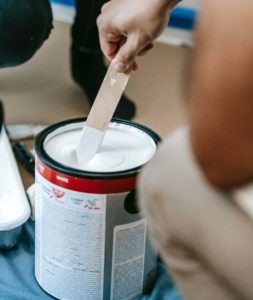Regulations Involved
The regulations that govern retail labels vary depending on the country. For some jurisdictions like the European Union, retail labels for chemical products are subject to most of the same requirements as workplace labels and must conform to the jurisdiction’s Globally Harmonized System (GHS) labelling standards, with some modifications. However, in countries like Canada, the United States, Mexico, and Australia (among others), retail labels are subject to an entirely different set of regulations than workplace labels.
For example: In the United States, retail chemical products must be labelled according to the Code of Federal Regulations Title 16’s Federal Hazardous Substances Act (FHSA) and Fair Packaging and Labeling Act (FPLA) and are monitored by the Consumer Product Safety Commission (CPSC). In contrast, workplace chemical products in the United States are subject to the GHS labelling requirements enforced by the Occupational Safety and Health Administration (OSHA) under Title 29’s Hazard Communication Standard. In Canada, retail products are governed by the Consumer Chemicals and Containers Regulations, 2001 (CCCR), the Canadian Consumer Product Safety Act (CCPSA), and the Consumer Packaging and Labelling Act (CPLA) and its regulations instead of the GHS workplace label requirements under the Hazardous Products Act and Regulations.
It’s also important to remember that provincial or state level regulations may require labelling in addition to the federally mandated labelling mentioned above.
Retail Label

Who Does This Apply To?
Retail labels are required for any chemical product that is available for purchase by the general public and is typically used for domestic or household use. These are often called “consumer chemical products” and include products like automotive fluids, household cleaners, adhesives or paints, etc.
The intended users of consumer chemical products will not necessarily have the same knowledge or training for handling chemicals as someone using them in the workplace, so it is important that the labelling be adapted so that the product’s hazards and precautions are easily understood by users of varying literacy, age, and education. To achieve this, some jurisdictions have implemented requirements for minimum text sizes, standardized formatting, and restrictions on the types of font and colours that can be used on the label.
Sometimes a consumer chemical product is available to both the general public and workplaces, in which case the supplier must ensure the product is labelled in such a way that it is compliant with both retail and workplace labelling requirements.
Is This Regulation Mandatory?
Generally speaking, all retail products will require a label that identifies the product’s net quantity, hazards, handling and storage precautions, and first aid measures, if necessary. The specific requirements depend on the country, which may require additional information including but not limited to the country of origin, other markings or pictograms and/or information regarding the packaging.
What are the risks if a company chooses not to comply?
If a retail label is not compliant, it may increase the risk of injury or accidental poisonings due to improper storage or handling. The penalties for a non-compliant retail label could include recalls, stop sale orders, or monetary penalties for the supplier and/or manufacturer. If a recall takes place, the product and distributor information could be posted online for the public to see like on Health Canada’s website.
How Can Nexreg Ensure Your Compliance?
For jurisdictions where retail-specific regulations are in force, Nexreg can issue a Consumer Label Review Memo outlining the information that is required to appear on the label in the official language(s) of the jurisdiction.
To complete the memo, we request that the following information be provided:
- The full formula, to determine the product hazards;
- Known physical data, to aid in hazard classification and determine if any exemptions or prohibitions apply;
- Container dimensions, to calculate the minimum required size of some label elements, and;
- Current label artwork, if available.
Since retail label requirements can significantly vary by jurisdiction, we recommend having separate labels for each country. However, for products that do not have many hazards and a large enough container, it may be possible to create a single label that will be compliant in multiple countries, such as a US CPSC + Canada CCCR combination label.
Once the label artwork has been prepared according to the requirements in the Consumer Label Review Memo, Nexreg can review your draft label artwork to ensure it is in compliance. For more information about our Retail Label Review services click here.
Nexreg is constantly expanding our retail label portfolio. If your company is looking to branch sales to a new country and are unsure which regulations may apply to your product, Nexreg’s regulatory consulting services can investigate on your behalf.
We’re SDS Experts
For quality compliance resources for companies of all sizes across the world.
Nexreg Advantage
When you chose Nexreg’s services, you choose the Nexreg Advantage which includes:
- Services offered in over 50 different countries
- Standard 11-15 Business Days turnaround time
- Regular RUSH (5-10 Business Days) and Express RUSH (24Hr-96Hr turnaround time) services
- Guaranteed Product Compliance, Confidentiality, and Documents Insured Against Errors and Omissions
- Expert Regulatory Consultants with Consultation on Demand
- Access to Global Network of Regulatory Experts and Professionals
- Customizable documents – Include Company Logos, Specialized Statements and Formatting
The Nexreg Advantage is a guarantee that your products will have the proper safety documentation, correct format, and compliance with specific country regulations. Contact us to learn more about MSDS services.
Toll Free Phone: 1-866-361-3032
Local Phone: +1 519-488-5126
